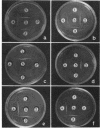Abstract
Zamora, A. (University of Mexico, Mexico, D.F.), L. F. Bojalil, and Fernando Bastarrachea. Immunologically active polysaccharides from Nocardia asteroides and Nocardia brasiliensis. J. Bacteriol. 85:549–555. 1963.—Two immunologically active polysaccharides were isolated from Nocardia asteroides (Poly I Na and Poly II Na) and N. brasiliensis (Poly I Nb and Poly II Nb). These polysaccharides were isolated from cell extracts and purified by methanol precipitation, chloroform extraction of extraneous material, and deproteinization with trichloroacetic acid. The crucial step used for separation of Poly I and Poly II from both nocardias was differential solubility. From dried preparations containing both polysaccharides, Poly I was solubilized at pH 10, whereas Poly II remained insoluble and was subsequently solubilized at pH 5. Poly I Na and Poly I Nb are apparently the same. Arabinose and galactose were the monosaccharide constituents of these polysaccharides, and their molar ratios were similar. Furthermore, Poly I Na and Poly I Nb cross-reacted in agar diffusion precipitin tests with rabbit antisera prepared against either N. asteroides or N. brasiliensis. Either polysaccharide absorbed serum antibodies against the other. These polysaccharides can be regarded as groupspecific. Poly II Na and Poly II Nb are different and species-specific. They are composed of arabinose, galactose, and mannose but exhibit different molar ratios of these sugars according to species. They reacted only with homologous antisera.
Full text
PDF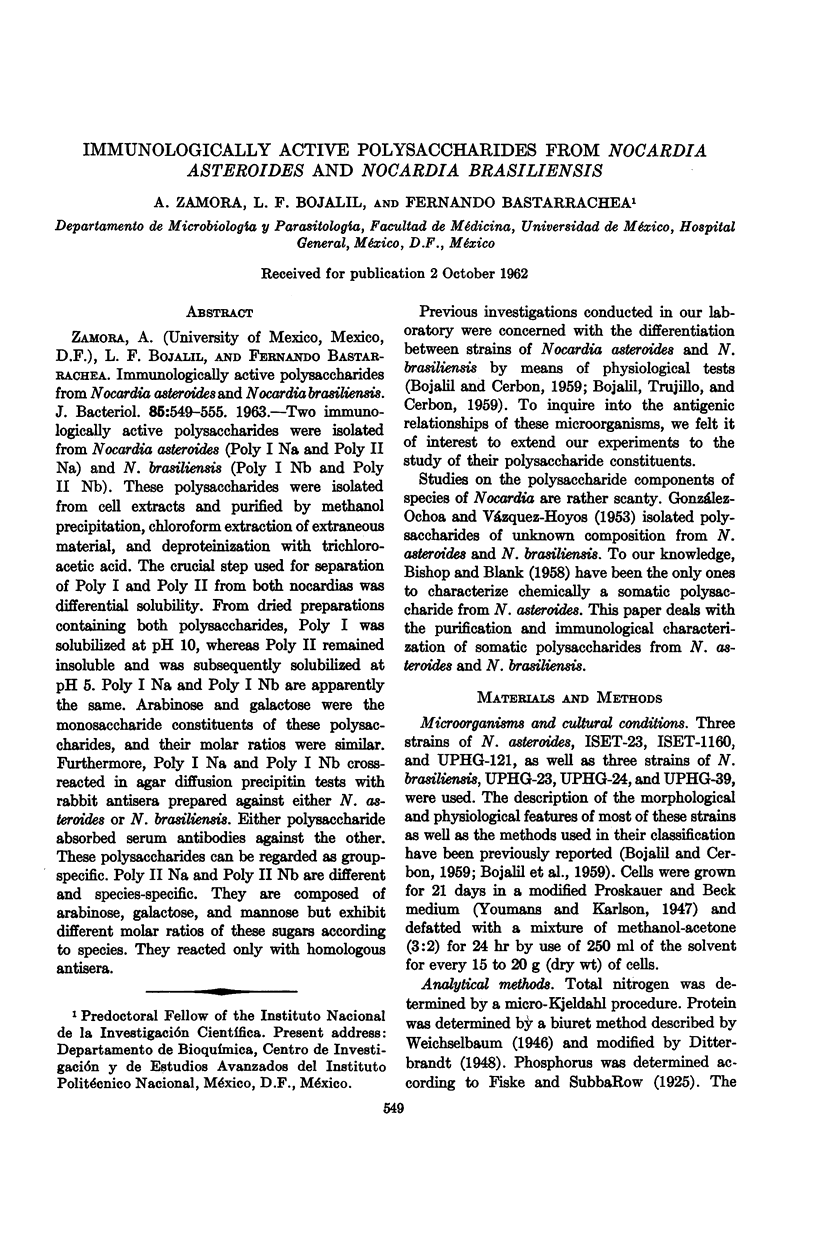
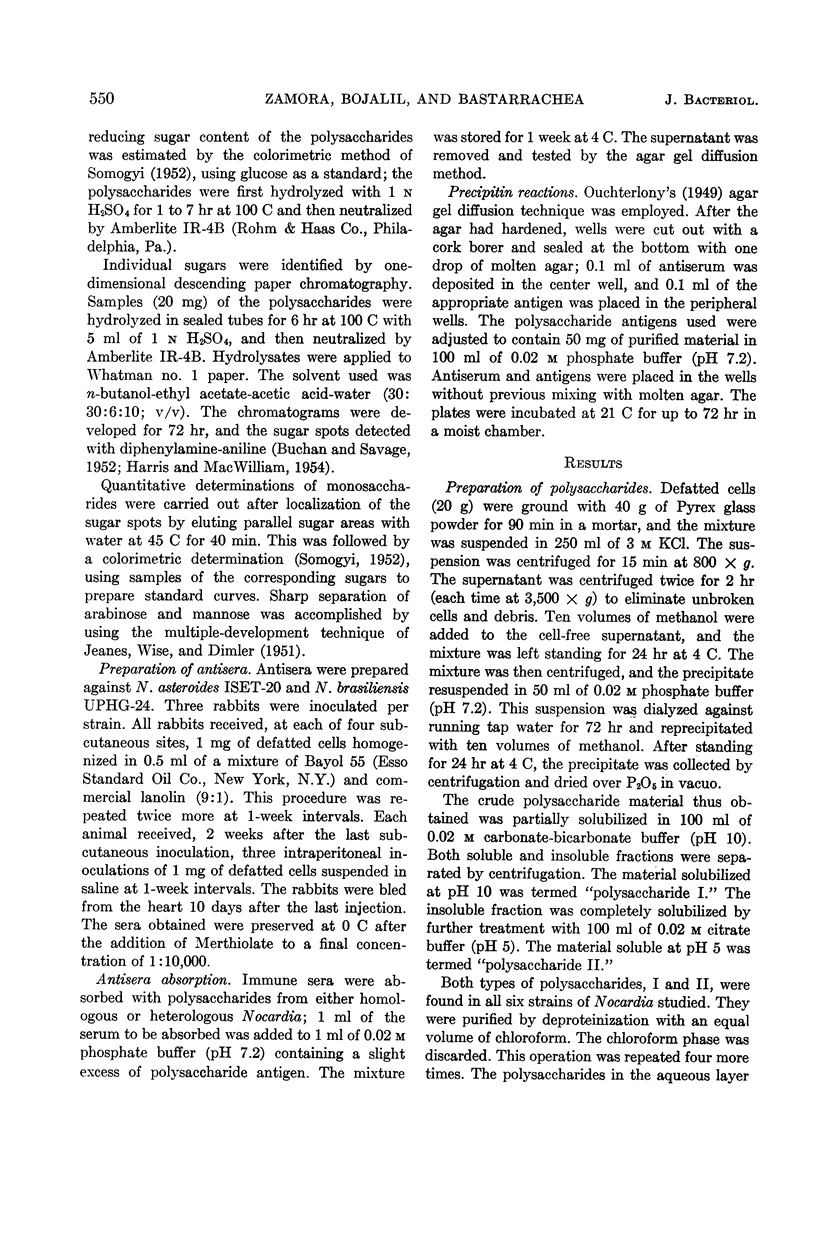
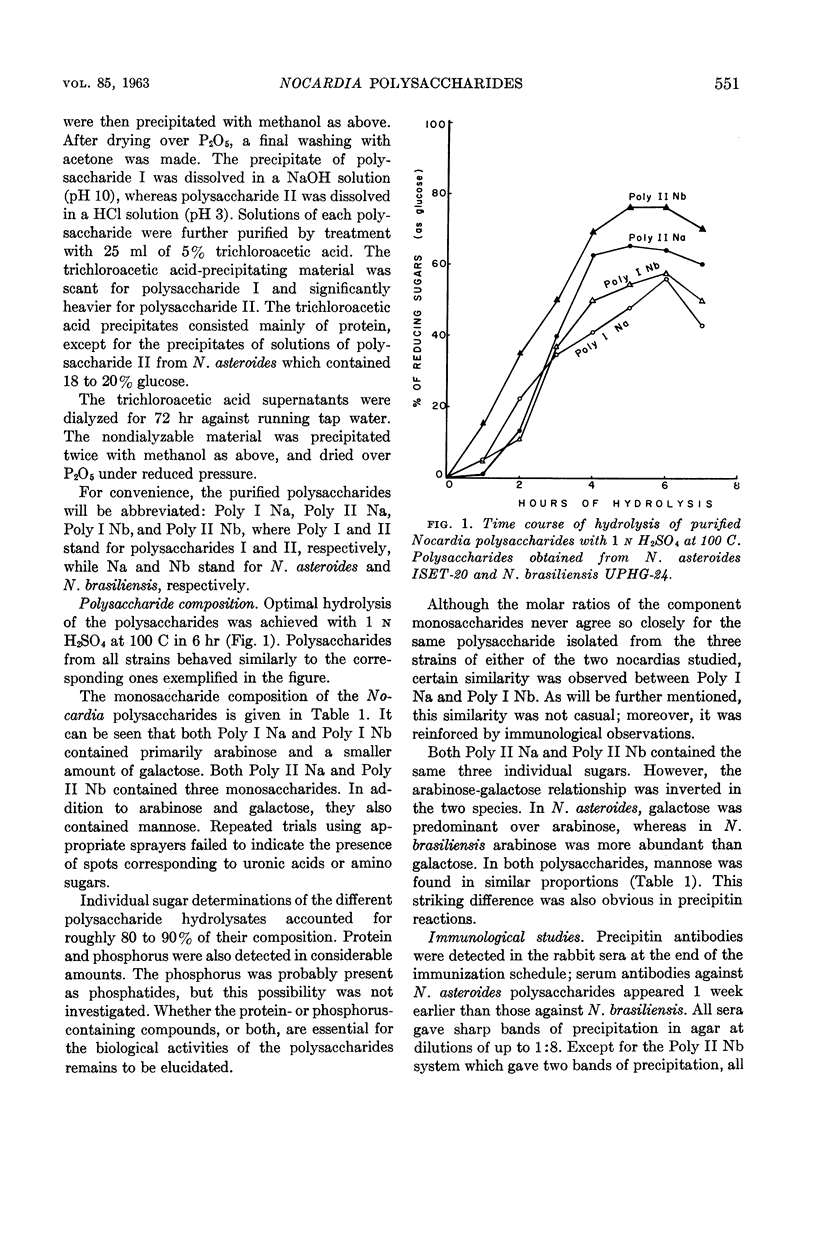
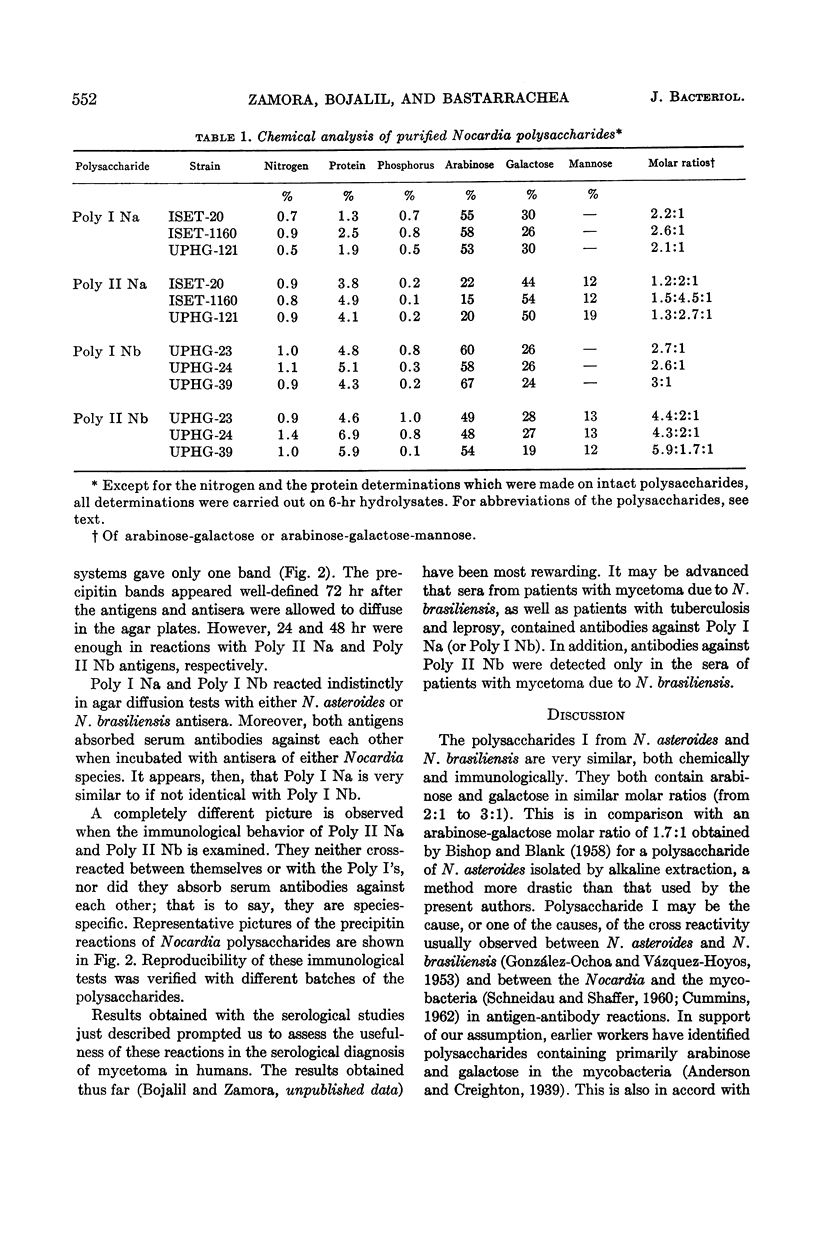
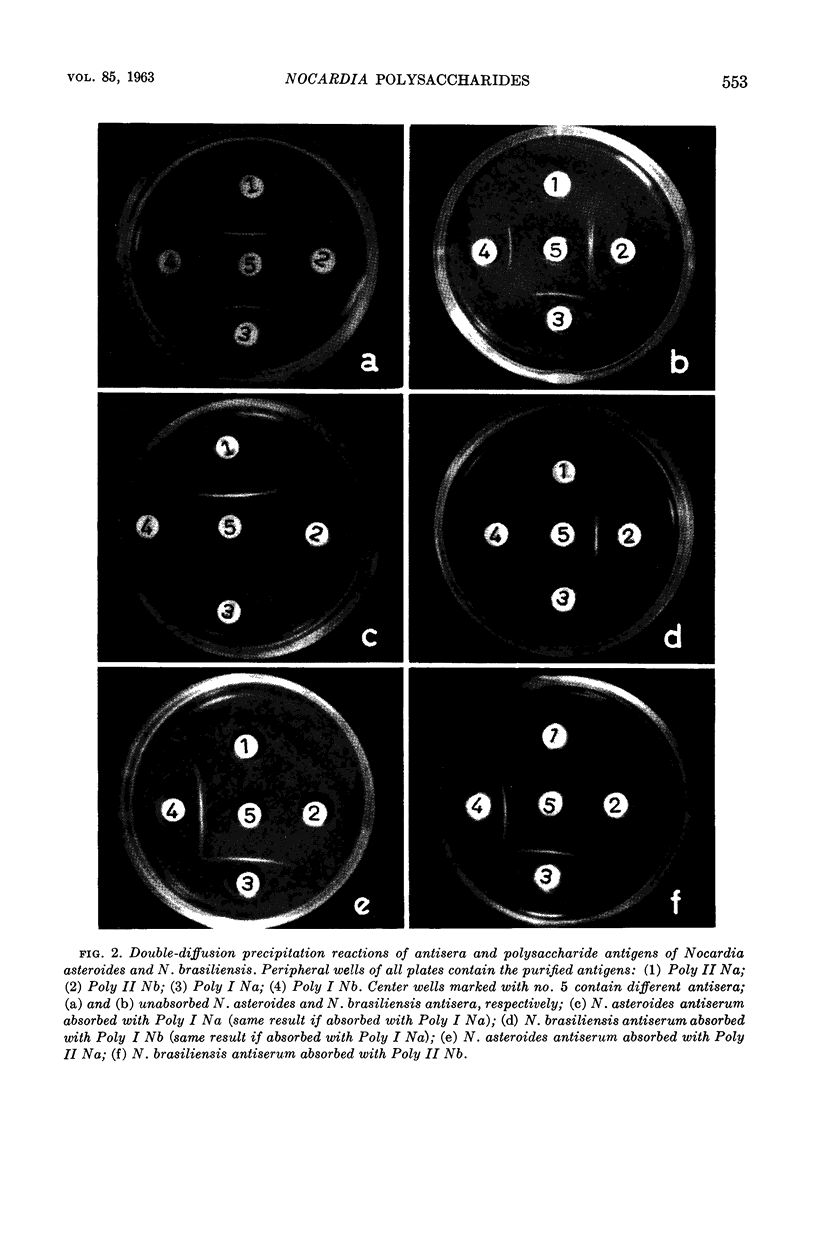
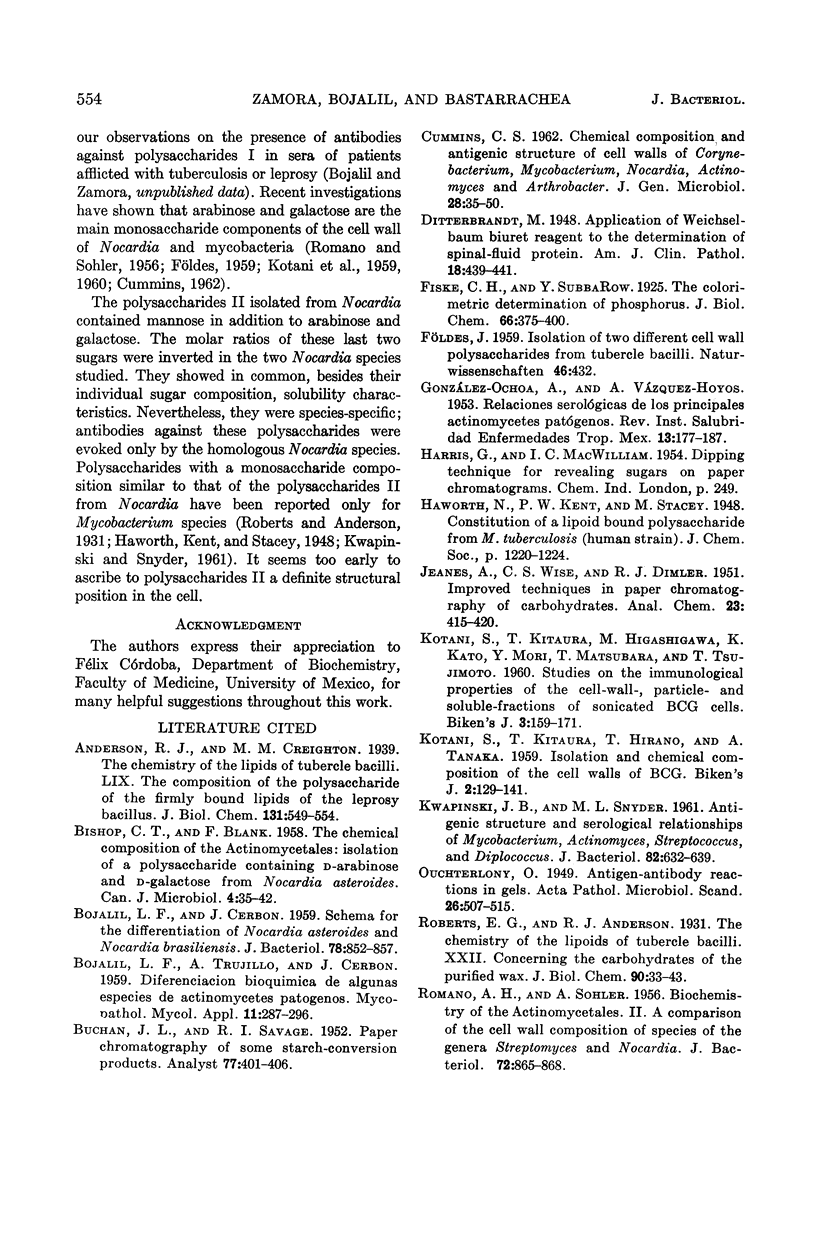
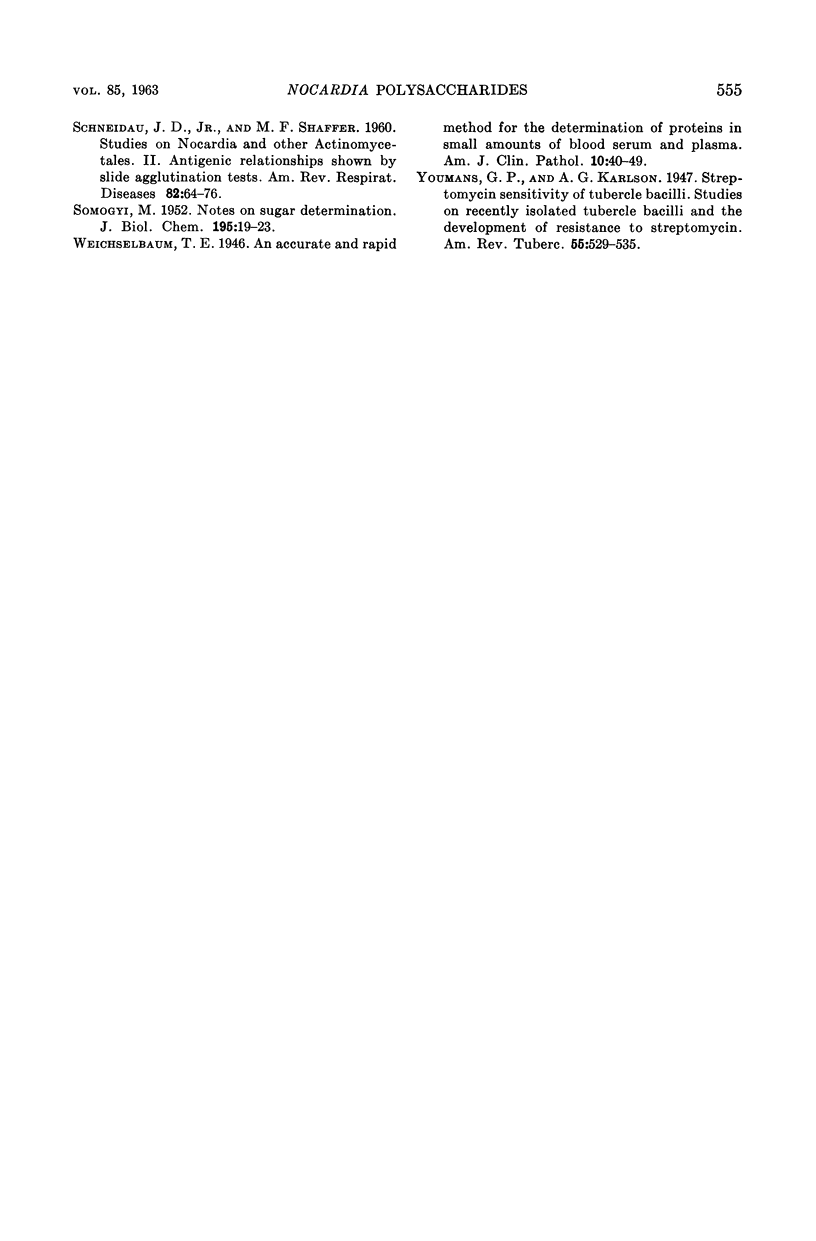
Images in this article
Selected References
These references are in PubMed. This may not be the complete list of references from this article.
- BISHOP C. T., BLANK F. The chemical composition of the Actinomycetales: isolation of a polysaccharide containing D-arabinose and D-galactose from Nocardia asteroides. Can J Microbiol. 1958 Feb;4(1):35–42. doi: 10.1139/m58-005. [DOI] [PubMed] [Google Scholar]
- BOJALIL L. F., TRUJILLO A., CERBON J. [Biochemical differentiation of some species of pathogenic Actinomycetes]. Mycopathol Mycol Appl. 1959 Nov 30;11:287–296. doi: 10.1007/BF02089504. [DOI] [PubMed] [Google Scholar]
- BOJALIL L. J., CERBON J. Schema for the differentiation of Nocardia asteroides and Nocardia brasiliensis. J Bacteriol. 1959 Dec;78:852–857. doi: 10.1128/jb.78.6.852-857.1959. [DOI] [PMC free article] [PubMed] [Google Scholar]
- CUMMINS C. S. Chemical composition and antigenic structure of cell walls of Corynebacterium, Mycobacterium, Nocardia, Actinomyces and Arthrobacter. J Gen Microbiol. 1962 Apr;28:35–50. doi: 10.1099/00221287-28-1-35. [DOI] [PubMed] [Google Scholar]
- GONZALEZ OCHOA A., VAZQUEZ HOYOS A. Relaciones serológicas de los principales Actinomycetes patógenos. Rev Inst Salubr Enferm Trop. 1953 Sep;13(3):177–187. [PubMed] [Google Scholar]
- KWAPINSKI J. B., SNYDER M. L. Antigenic structure and serological relationships of Mycobacterium, Actinomyces, Streptococcus, and Diplococcus. J Bacteriol. 1961 Nov;82:632–639. doi: 10.1128/jb.82.5.632-639.1961. [DOI] [PMC free article] [PubMed] [Google Scholar]
- ROMANO A. H., SOHLER A. Biochemistry of the actinomycetales. II. A comparison of the cell wall composition of species of the genera Streptomyces and Nocardia. J Bacteriol. 1956 Dec;72(6):865–868. doi: 10.1128/jb.72.6.865-868.1956. [DOI] [PMC free article] [PubMed] [Google Scholar]
- SCHNEIDAU J. D., Jr, SHAFFER M. F. Studies on nocardia and other actinomycetales. II. Antigenic relationships shown by slide agglutination tests. Am Rev Respir Dis. 1960 Jul;82:64–76. doi: 10.1164/arrd.1960.82.1.64. [DOI] [PubMed] [Google Scholar]
- SMOGYI M. Notes on sugar determination. J Biol Chem. 1952 Mar;195(1):19–23. [PubMed] [Google Scholar]



